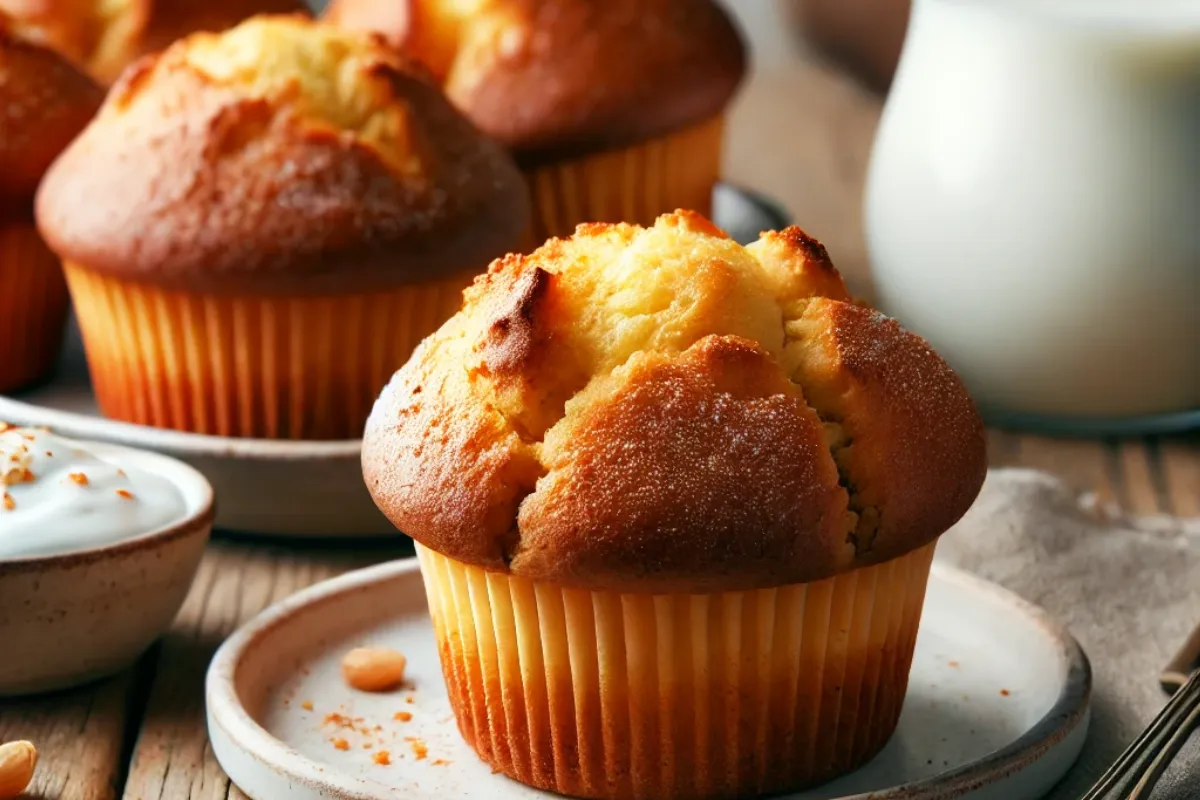Yogurt has become a popular ingredient in baking due to its versatility and ability to enhance both texture and flavor. It adds moisture to cakes and muffins, ensuring a tender crumb.
Introduction to Yogurt in Baking
Bakers value yogurt for its ability to create tender and flavorful baked goods. Whether you’re an experienced baker or just starting, understanding how yogurt functions in baking will help you improve your recipes.
Types of Yogurt Used in Baking
Different types of yogurt produce different results in baking. The two most common types are Greek yogurt and regular yogurt.
- Greek yogurt: This yogurt is thicker and richer, adding more creaminess and tang to your baked goods. It works well in dense cakes and breads.
- Regular yogurt: Lighter in consistency, regular yogurt suits recipes where you want a delicate texture, like in muffins or pancakes.
You might want to explore how to bake with Greek yogurt instead of regular yogurt for richer textures in your baked goods.
Moisture Retention and Texture Enhancement
Yogurt is excellent at retaining moisture, which ensures your cakes, muffins, and breads stay tender even after a few days. This makes it ideal for recipes that might otherwise turn out dry, such as low-fat or gluten-free options. Adding yogurt to cake batter results in a moist, light cake with a fine crumb.
Tangy Flavor Profile
Yogurt’s natural tanginess brings a unique flavor to your baked goods. This tang complements the sweetness of treats like lemon cakes or chocolate muffins, creating a more complex taste. Traditional baking often uses yogurt to add flavor and moisture to breads, giving them a slightly sour, old-fashioned taste. Try recipes like the chocolate brownie recipe with Greek yogurt to see how yogurt enhances flavor in rich, chocolatey desserts.
Acidity and Chemical Reactions
Yogurt’s acidity plays a crucial role in baking, especially in activating baking soda. This interaction helps baked goods rise, producing lighter and fluffier cakes and breads. For recipes requiring a good rise, yogurt ensures a perfect, airy texture that’s hard to achieve with other ingredients. Learn more about this process in recipes like can you replace oil with Greek yogurt in brownies.
Yogurt as a Healthier Alternative
Yogurt serves as a healthier alternative to traditional ingredients like butter, oil, and sour cream. By substituting yogurt, you reduce fat content while adding nutrients like protein and probiotics.
- Substituting yogurt for butter or oil: Use yogurt in place of butter or oil to create a lower-calorie, lower-fat product without sacrificing moisture or flavor.
- Yogurt instead of sour cream: Yogurt provides a similar texture and tang to sour cream but with fewer calories and more protein.
For specific guidance on replacing ingredients, check out the post on can I replace butter with yogurt in brownies.
Yogurt’s Role in Gluten-Free Baking
Gluten-free baking often lacks the structure gluten provides, but yogurt helps by binding ingredients and retaining moisture. In gluten-free cakes and muffins, yogurt creates a moist, tender crumb, preventing the dry, crumbly texture common in gluten-free baking.
Common Recipes Using Yogurt
Yogurt enhances various baked goods, from cakes to muffins to breads. Popular yogurt-based recipes include:
- Yogurt cake: A moist, flavorful cake where yogurt is the star ingredient. It’s light, with a tender crumb, and can be flavored with lemon, vanilla, or chocolate.
- Yogurt muffins: These muffins are soft and fluffy, with a tangy flavor that pairs well with fruits like blueberries or raspberries.
- Yogurt bread: A dense, moist bread benefiting from yogurt’s added moisture and tang.
Substituting Yogurt for Other Ingredients
Yogurt replaces several ingredients in baking:
- Milk or buttermilk: Substitute yogurt for milk or buttermilk to add thickness and tanginess, especially useful in pancake or waffle batter.
- Sour cream: Yogurt can replace sour cream in most recipes, providing similar texture and flavor.
Remember, substituting yogurt may affect moisture content and baking time, so adjust accordingly. Explore substitution options in posts like can you substitute yogurt for butter.
Troubleshooting Yogurt in Baking
While yogurt is versatile, a few issues may arise:
- Curdling: If yogurt is too acidic or combined with other acidic ingredients, it may curdle. To prevent this, balance the acidity in your recipe.
- Excess moisture: Yogurt adds moisture, usually beneficial, but in recipes with a lot of liquid, reduce other liquids slightly.
FAQs About Yogurt in Baking
- Can you substitute yogurt for sour cream in all recipes?
Yes, in most recipes, yogurt can replace sour cream, but consider the consistency and flavor. - Does using yogurt in baking affect baking time?
It can. Yogurt adds moisture, possibly requiring a longer baking time. - What type of yogurt is best for baking?
Greek yogurt is often preferred for its thickness and rich flavor, though regular yogurt works well too, depending on the desired texture. - Can yogurt replace eggs in baking recipes?
Yes, yogurt can replace eggs in some recipes, especially when eggs aren’t crucial for structure.
Conclusion and Final Thoughts
Yogurt’s versatility in baking is unmatched. Whether you want healthier baked goods or to enhance texture and flavor, yogurt is a valuable ingredient. From moist cakes to fluffy muffins, baking with yogurt offers many benefits, making it essential in your kitchen.
By understanding yogurt’s role in baking, you can confidently incorporate it into your recipes, leading to delicious, satisfying results every time.

